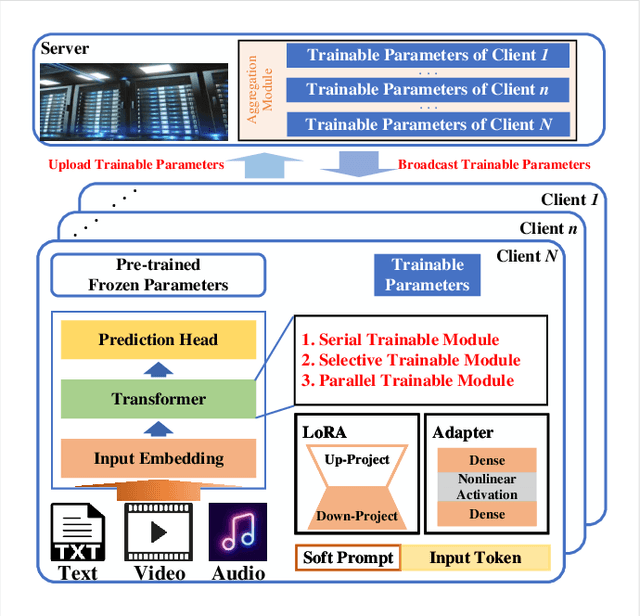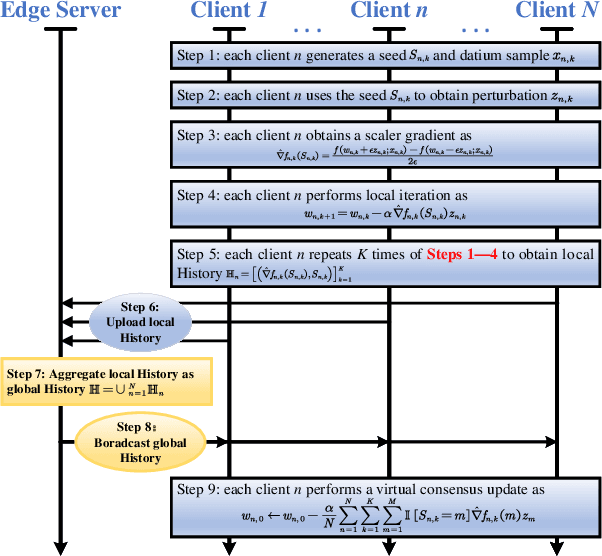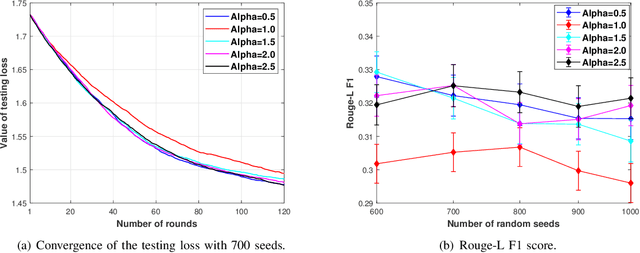Fangxin Wang
ExScene: Free-View 3D Scene Reconstruction with Gaussian Splatting from a Single Image
Mar 31, 2025Abstract:The increasing demand for augmented and virtual reality applications has highlighted the importance of crafting immersive 3D scenes from a simple single-view image. However, due to the partial priors provided by single-view input, existing methods are often limited to reconstruct low-consistency 3D scenes with narrow fields of view from single-view input. These limitations make them less capable of generalizing to reconstruct immersive scenes. To address this problem, we propose ExScene, a two-stage pipeline to reconstruct an immersive 3D scene from any given single-view image. ExScene designs a novel multimodal diffusion model to generate a high-fidelity and globally consistent panoramic image. We then develop a panoramic depth estimation approach to calculate geometric information from panorama, and we combine geometric information with high-fidelity panoramic image to train an initial 3D Gaussian Splatting (3DGS) model. Following this, we introduce a GS refinement technique with 2D stable video diffusion priors. We add camera trajectory consistency and color-geometric priors into the denoising process of diffusion to improve color and spatial consistency across image sequences. These refined sequences are then used to fine-tune the initial 3DGS model, leading to better reconstruction quality. Experimental results demonstrate that our ExScene achieves consistent and immersive scene reconstruction using only single-view input, significantly surpassing state-of-the-art baselines.
Topology-Aware Conformal Prediction for Stream Networks
Mar 06, 2025Abstract:Stream networks, a unique class of spatiotemporal graphs, exhibit complex directional flow constraints and evolving dependencies, making uncertainty quantification a critical yet challenging task. Traditional conformal prediction methods struggle in this setting due to the need for joint predictions across multiple interdependent locations and the intricate spatio-temporal dependencies inherent in stream networks. Existing approaches either neglect dependencies, leading to overly conservative predictions, or rely solely on data-driven estimations, failing to capture the rich topological structure of the network. To address these challenges, we propose Spatio-Temporal Adaptive Conformal Inference (\texttt{STACI}), a novel framework that integrates network topology and temporal dynamics into the conformal prediction framework. \texttt{STACI} introduces a topology-aware nonconformity score that respects directional flow constraints and dynamically adjusts prediction sets to account for temporal distributional shifts. We provide theoretical guarantees on the validity of our approach and demonstrate its superior performance on both synthetic and real-world datasets. Our results show that \texttt{STACI} effectively balances prediction efficiency and coverage, outperforming existing conformal prediction methods for stream networks.
Generative Semantic Communication: Architectures, Technologies, and Applications
Dec 11, 2024



Abstract:This paper delves into the applications of generative artificial intelligence (GAI) in semantic communication (SemCom) and presents a thorough study. Three popular SemCom systems enabled by classical GAI models are first introduced, including variational autoencoders, generative adversarial networks, and diffusion models. For each system, the fundamental concept of the GAI model, the corresponding SemCom architecture, and the associated literature review of recent efforts are elucidated. Then, a novel generative SemCom system is proposed by incorporating the cutting-edge GAI technology-large language models (LLMs). This system features two LLM-based AI agents at both the transmitter and receiver, serving as "brains" to enable powerful information understanding and content regeneration capabilities, respectively. This innovative design allows the receiver to directly generate the desired content, instead of recovering the bit stream, based on the coded semantic information conveyed by the transmitter. Therefore, it shifts the communication mindset from "information recovery" to "information regeneration" and thus ushers in a new era of generative SemCom. A case study on point-to-point video retrieval is presented to demonstrate the superiority of the proposed generative SemCom system, showcasing a 99.98% reduction in communication overhead and a 53% improvement in retrieval accuracy compared to the traditional communication system. Furthermore, four typical application scenarios for generative SemCom are delineated, followed by a discussion of three open issues warranting future investigation. In a nutshell, this paper provides a holistic set of guidelines for applying GAI in SemCom, paving the way for the efficient implementation of generative SemCom in future wireless networks.
Federated In-Context LLM Agent Learning
Dec 11, 2024



Abstract:Large Language Models (LLMs) have revolutionized intelligent services by enabling logical reasoning, tool use, and interaction with external systems as agents. The advancement of LLMs is frequently hindered by the scarcity of high-quality data, much of which is inherently sensitive. Federated learning (FL) offers a potential solution by facilitating the collaborative training of distributed LLMs while safeguarding private data. However, FL frameworks face significant bandwidth and computational demands, along with challenges from heterogeneous data distributions. The emerging in-context learning capability of LLMs offers a promising approach by aggregating natural language rather than bulky model parameters. Yet, this method risks privacy leakage, as it necessitates the collection and presentation of data samples from various clients during aggregation. In this paper, we propose a novel privacy-preserving Federated In-Context LLM Agent Learning (FICAL) algorithm, which to our best knowledge for the first work unleashes the power of in-context learning to train diverse LLM agents through FL. In our design, knowledge compendiums generated by a novel LLM-enhanced Knowledge Compendiums Generation (KCG) module are transmitted between clients and the server instead of model parameters in previous FL methods. Apart from that, an incredible Retrieval Augmented Generation (RAG) based Tool Learning and Utilizing (TLU) module is designed and we incorporate the aggregated global knowledge compendium as a teacher to teach LLM agents the usage of tools. We conducted extensive experiments and the results show that FICAL has competitive performance compared to other SOTA baselines with a significant communication cost decrease of $\mathbf{3.33\times10^5}$ times.
User Centric Semantic Communications
Nov 05, 2024Abstract:Current studies on semantic communications mainly focus on efficiently extracting semantic information to reduce bandwidth usage between a transmitter and a user. Although significant process has been made in the semantic communications, a fundamental design problem is that the semantic information is extracted based on certain criteria at the transmitter side along, without considering the user's actual requirements. As a result, critical information that is of primary concern to the user may be lost. In such cases, the semantic transmission becomes meaningless to the user, as all received information is irrelevant to the user's interests. To solve this problem, this paper presents a user centric semantic communication system, where the user sends its request for the desired semantic information to the transmitter at the start of each transmission. Then, the transmitter extracts the required semantic information accordingly. A key challenge is how the transmitter can understand the user's requests for semantic information and extract the required semantic information in a reasonable and robust manner. We solve this challenge by designing a well-structured framework and leveraging off-the-shelf products, such as GPT-4, along with several specialized tools for detection and estimation. Evaluation results demonstrate the feasibility and effectiveness of the proposed user centric semantic communication system.
BANGS: Game-Theoretic Node Selection for Graph Self-Training
Oct 12, 2024Abstract:Graph self-training is a semi-supervised learning method that iteratively selects a set of unlabeled data to retrain the underlying graph neural network (GNN) model and improve its prediction performance. While selecting highly confident nodes has proven effective for self-training, this pseudo-labeling strategy ignores the combinatorial dependencies between nodes and suffers from a local view of the distribution. To overcome these issues, we propose BANGS, a novel framework that unifies the labeling strategy with conditional mutual information as the objective of node selection. Our approach -- grounded in game theory -- selects nodes in a combinatorial fashion and provides theoretical guarantees for robustness under noisy objective. More specifically, unlike traditional methods that rank and select nodes independently, BANGS considers nodes as a collective set in the self-training process. Our method demonstrates superior performance and robustness across various datasets, base models, and hyperparameter settings, outperforming existing techniques. The codebase is available on https://github.com/fangxin-wang/BANGS .
Generative Semantic Communication for Text-to-Speech Synthesis
Oct 04, 2024Abstract:Semantic communication is a promising technology to improve communication efficiency by transmitting only the semantic information of the source data. However, traditional semantic communication methods primarily focus on data reconstruction tasks, which may not be efficient for emerging generative tasks such as text-to-speech (TTS) synthesis. To address this limitation, this paper develops a novel generative semantic communication framework for TTS synthesis, leveraging generative artificial intelligence technologies. Firstly, we utilize a pre-trained large speech model called WavLM and the residual vector quantization method to construct two semantic knowledge bases (KBs) at the transmitter and receiver, respectively. The KB at the transmitter enables effective semantic extraction, while the KB at the receiver facilitates lifelike speech synthesis. Then, we employ a transformer encoder and a diffusion model to achieve efficient semantic coding without introducing significant communication overhead. Finally, numerical results demonstrate that our framework achieves much higher fidelity for the generated speech than four baselines, in both cases with additive white Gaussian noise channel and Rayleigh fading channel.
DeformStream: Deformation-based Adaptive Volumetric Video Streaming
Sep 25, 2024



Abstract:Volumetric video streaming offers immersive 3D experiences but faces significant challenges due to high bandwidth requirements and latency issues in transmitting detailed content in real time. Traditional methods like point cloud streaming compromise visual quality when zoomed in, and neural rendering techniques are too computationally intensive for real-time use. Though mesh-based streaming stands out by preserving surface detail and connectivity, offering a more refined representation for 3D content, traditional mesh streaming methods typically transmit data on a per-frame basis, failing to take full advantage of temporal redundancies across frames. This results in inefficient bandwidth usage and poor adaptability to fluctuating network conditions. We introduce Deformation-based Adaptive Volumetric Video Streaming, a novel framework that enhances volumetric video streaming performance by leveraging the inherent deformability of mesh-based representations. DeformStream uses embedded deformation to reconstruct subsequent frames from inter-frame motion, significantly reducing bandwidth usage while ensuring visual coherence between frames. To address frame reconstruction overhead and network adaptability, we formulate a new QoE model that accounts for client-side deformation latency and design a dynamic programming algorithm to optimize the trade-off between visual quality and bandwidth consumption under varying network conditions. Our evaluation demonstrates that Deformation-based Adaptive Volumetric Video Streaming outperforms existing mesh-based streaming systems in both bandwidth efficiency and visual quality, offering a robust solution for real-time volumetric video applications.
Fine-Tuning and Deploying Large Language Models Over Edges: Issues and Approaches
Aug 20, 2024



Abstract:Since the invention of GPT2--1.5B in 2019, large language models (LLMs) have transitioned from specialized models to versatile foundation models. The LLMs exhibit impressive zero-shot ability, however, require fine-tuning on local datasets and significant resources for deployment. Traditional fine-tuning techniques with the first-order optimizers require substantial GPU memory that exceeds mainstream hardware capability. Therefore, memory-efficient methods are motivated to be investigated. Model compression techniques can reduce energy consumption, operational costs, and environmental impact so that to support sustainable artificial intelligence advancements. Additionally, large-scale foundation models have expanded to create images, audio, videos, and multi-modal contents, further emphasizing the need for efficient deployment. Therefore, we are motivated to present a comprehensive overview of the prevalent memory-efficient fine-tuning methods over the network edge. We also review the state-of-the-art literatures on model compression to provide a vision on deploying LLMs over the network edge.
Multi-level Personalized Federated Learning on Heterogeneous and Long-Tailed Data
May 10, 2024



Abstract:Federated learning (FL) offers a privacy-centric distributed learning framework, enabling model training on individual clients and central aggregation without necessitating data exchange. Nonetheless, FL implementations often suffer from non-i.i.d. and long-tailed class distributions across mobile applications, e.g., autonomous vehicles, which leads models to overfitting as local training may converge to sub-optimal. In our study, we explore the impact of data heterogeneity on model bias and introduce an innovative personalized FL framework, Multi-level Personalized Federated Learning (MuPFL), which leverages the hierarchical architecture of FL to fully harness computational resources at various levels. This framework integrates three pivotal modules: Biased Activation Value Dropout (BAVD) to mitigate overfitting and accelerate training; Adaptive Cluster-based Model Update (ACMU) to refine local models ensuring coherent global aggregation; and Prior Knowledge-assisted Classifier Fine-tuning (PKCF) to bolster classification and personalize models in accord with skewed local data with shared knowledge. Extensive experiments on diverse real-world datasets for image classification and semantic segmentation validate that MuPFL consistently outperforms state-of-the-art baselines, even under extreme non-i.i.d. and long-tail conditions, which enhances accuracy by as much as 7.39% and accelerates training by up to 80% at most, marking significant advancements in both efficiency and effectiveness.
 Add to Chrome
Add to Chrome Add to Firefox
Add to Firefox Add to Edge
Add to Edge